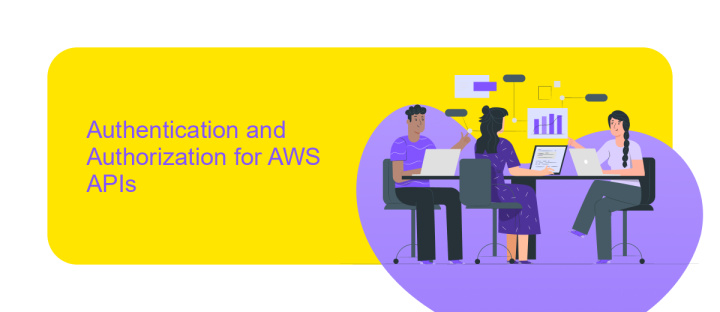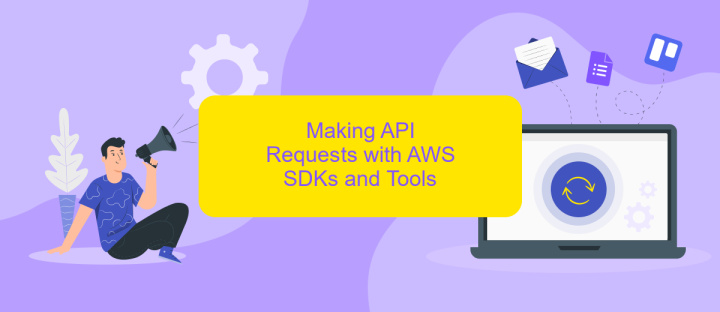AWS API Integration
Integrating with AWS APIs unlocks a world of possibilities for developers and businesses, enabling seamless access to a suite of powerful cloud services. By leveraging AWS API integration, organizations can enhance their applications with scalable computing power, secure storage solutions, and advanced data analytics. This article explores the key benefits and best practices for effectively integrating AWS APIs into your technology stack, driving innovation and efficiency.
Understanding AWS APIs and Choosing the Right Service
Amazon Web Services (AWS) provides a vast array of APIs that enable developers to interact with its cloud services programmatically. Understanding these APIs is crucial for effectively leveraging AWS capabilities, as they allow for the automation of tasks, integration with other applications, and the building of scalable solutions. Each AWS service, such as S3 for storage or EC2 for compute, offers specific APIs that cater to different operational needs.
- Amazon S3 API: Used for object storage operations, including uploading, downloading, and managing data.
- Amazon EC2 API: Allows for managing virtual servers, including launching, stopping, and configuring instances.
- AWS Lambda API: Enables the execution of code in response to events, without server management.
- AWS IAM API: Manages user access and permissions for AWS resources.
Choosing the right AWS service involves assessing your specific requirements and understanding how each API can fulfill those needs. Consider factors like data volume, processing power, and security requirements. By aligning your project goals with the capabilities of AWS APIs, you can optimize performance and cost-efficiency, ensuring a robust and scalable cloud solution.
Authentication and Authorization for AWS APIs

Authentication and authorization are crucial components when integrating with AWS APIs. AWS uses a robust mechanism called AWS Identity and Access Management (IAM) to manage access to its services. IAM allows you to create users, groups, and roles, granting them specific permissions to interact with AWS resources. When an API request is made, AWS verifies the identity of the requester and checks their permissions. This process ensures that only authorized users can access or modify resources, maintaining the security and integrity of your applications.
For seamless integration with AWS APIs, tools like ApiX-Drive can be leveraged to automate and streamline the authentication process. ApiX-Drive facilitates the connection between various platforms and AWS services, reducing the complexity of manual configurations. By utilizing such tools, developers can focus on building applications while ensuring secure and efficient API interactions. ApiX-Drive's user-friendly interface and automated workflows help maintain compliance with AWS's security standards, making it an invaluable asset for managing API integrations.
Making API Requests with AWS SDKs and Tools

Integrating with AWS APIs is streamlined using AWS SDKs and tools, which provide pre-built libraries and utilities for various programming languages. These SDKs simplify the process of connecting to AWS services, allowing developers to focus on building applications rather than handling low-level API requests. With these tools, you can authenticate, send requests, and receive responses efficiently.
- Choose the appropriate AWS SDK for your programming language or platform.
- Install the SDK using package managers like npm for Node.js, pip for Python, or Maven for Java.
- Configure your AWS credentials and region settings, typically through a configuration file or environment variables.
- Use the SDK's provided methods to construct and send API requests to AWS services.
- Handle the responses, including any errors, using the SDK's built-in error-handling mechanisms.
By leveraging AWS SDKs and tools, developers can efficiently interact with AWS services, ensuring secure and reliable API requests. This approach not only accelerates development time but also enhances the maintainability of applications by abstracting complex API interactions into manageable code. Whether you're building a simple application or a complex cloud solution, AWS SDKs provide the necessary components to facilitate seamless API integration.
Handling API Responses, Errors, and Rate Limiting

When integrating with AWS APIs, handling responses effectively is crucial for maintaining robust applications. API responses can vary significantly, containing valuable data or error messages that need careful parsing. It's essential to implement logic that checks the status codes and response bodies to differentiate between successful requests and those that require additional handling.
Errors are inevitable when dealing with APIs, so it's important to anticipate and manage them gracefully. AWS APIs return error codes and messages that can help diagnose issues. Implementing error handling strategies, such as retry mechanisms and logging, ensures that your application can recover from temporary glitches and provides insights into failures for further investigation.
- Check status codes to identify success or error responses.
- Parse response bodies for detailed data or error information.
- Implement retry logic for transient errors or rate limits.
- Log errors for monitoring and troubleshooting purposes.
Rate limiting is another critical aspect to consider when working with AWS APIs. AWS enforces limits on the number of API requests to protect its infrastructure. To avoid hitting these limits, implement strategies such as exponential backoff, request batching, and monitoring your application's request patterns to optimize API usage and maintain uninterrupted service.


Best Practices for Secure and Efficient API Integration
When integrating AWS APIs, prioritizing security and efficiency is crucial. Begin by implementing strong authentication mechanisms such as AWS Identity and Access Management (IAM) roles, which ensure that only authorized users and applications can access your APIs. Utilize encryption protocols like HTTPS to protect data in transit and AWS Key Management Service (KMS) for data at rest. Regularly audit your API access logs using AWS CloudTrail to detect any unauthorized access attempts or unusual activities. Additionally, consider using rate limiting to prevent abuse and ensure that your API remains responsive under high demand.
For efficient integration, optimize your API calls by minimizing data transfer and employing pagination for large datasets. Leverage caching mechanisms such as AWS CloudFront to reduce latency and improve response times. Utilize tools like ApiX-Drive to streamline the integration process, allowing you to connect AWS APIs with other applications effortlessly. ApiX-Drive offers a user-friendly interface that simplifies API management, enabling seamless data flow between services without extensive coding. By following these best practices, you can achieve a secure and efficient AWS API integration that meets your business needs.
FAQ
What is AWS API integration and why is it important?
How can I automate AWS API integration processes?
What are the key challenges in AWS API integration?
How do I ensure data security in AWS API integration?
What are the best practices for managing API rate limits in AWS integrations?
Apix-Drive is a universal tool that will quickly streamline any workflow, freeing you from routine and possible financial losses. Try ApiX-Drive in action and see how useful it is for you personally. In the meantime, when you are setting up connections between systems, think about where you are investing your free time, because now you will have much more of it.

